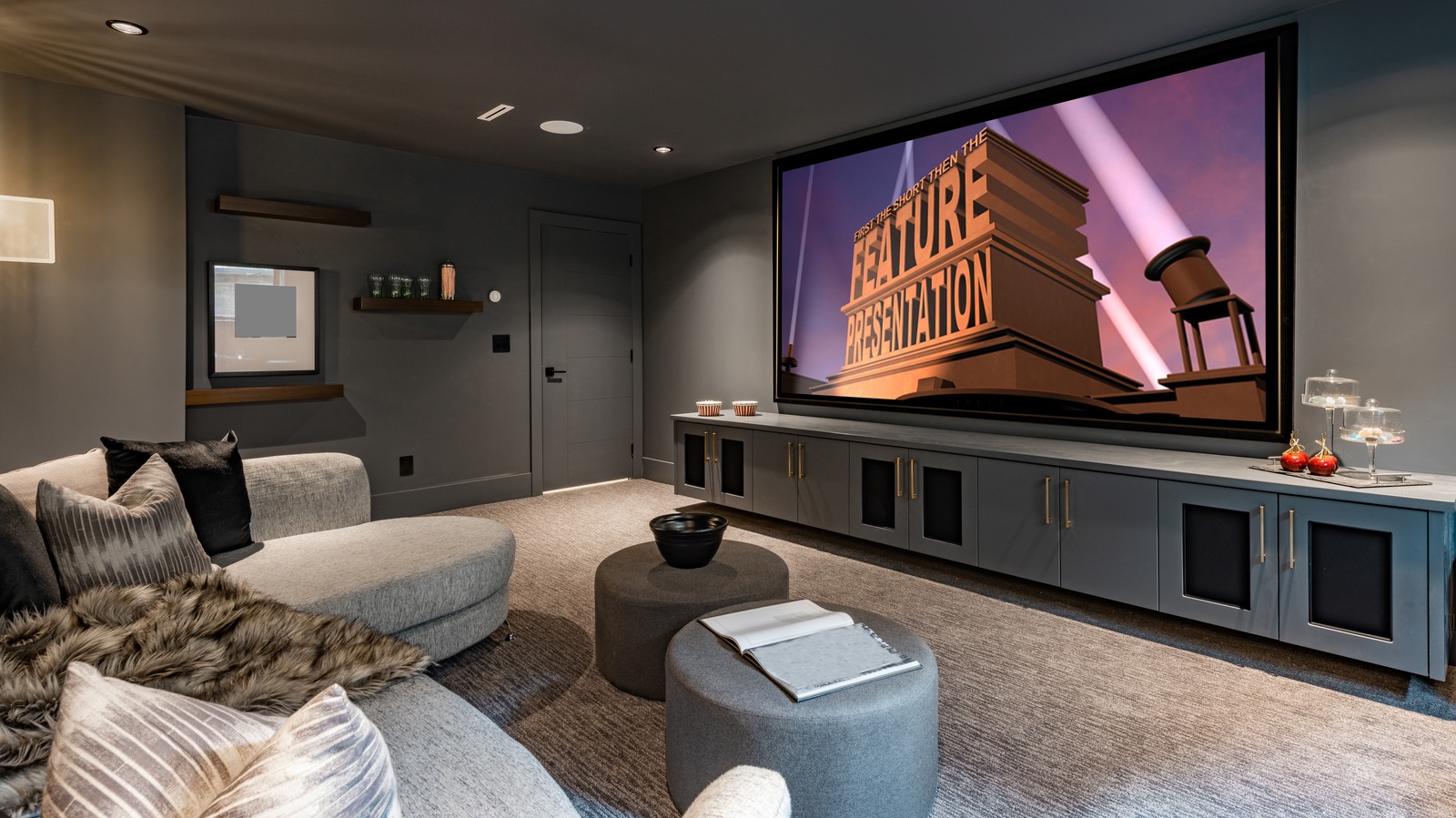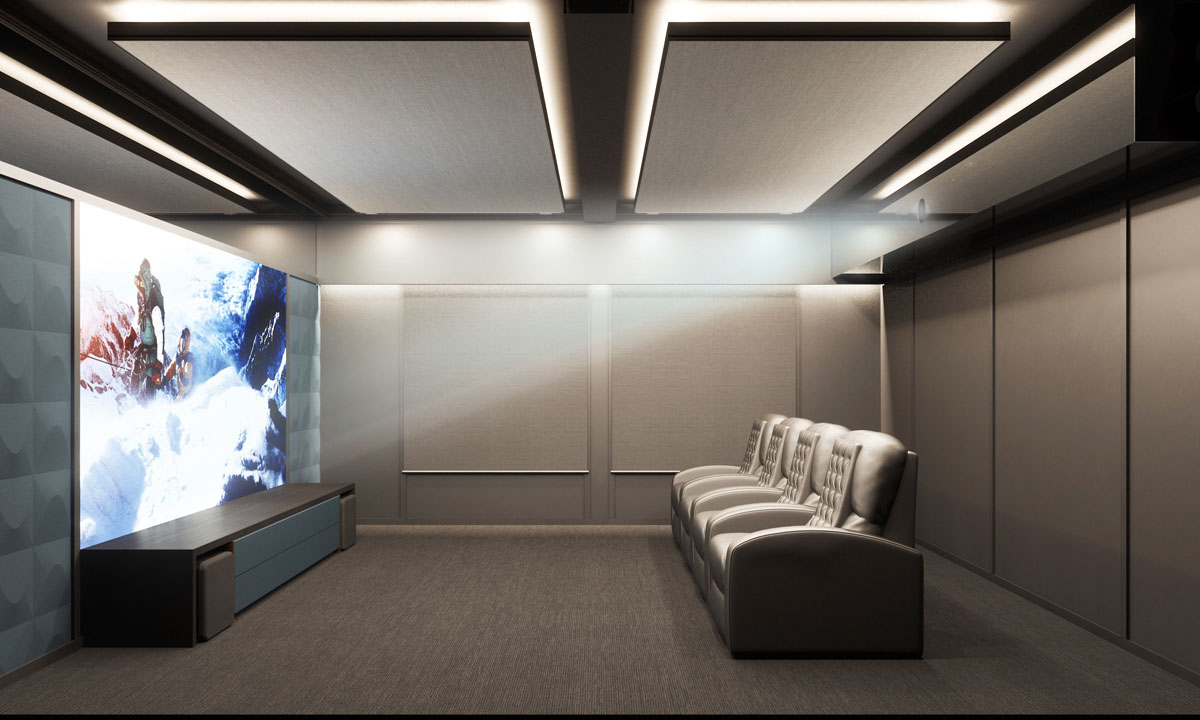Upgrade Your Living Space with Tampa Home Theater Installation
Wiki Article
Home Theater 101: Whatever You Need to Know for a Cinematic Experience in your home
Developing a home theater that matches the cinematic experience of a commercial theater involves careful consideration of numerous parts, consisting of display selection, audio systems, and space design. Whether you are considering the optimal screen dimension or the ins and outs of surround sound, recognizing these principles is essential.Choosing the Right Screen
When setting up a home movie theater, choosing the right display can make or break the checking out experience - tampa home theater. The display functions as the centerpiece of your setup, influencing photo quality, seeing angles, and total visual. Trick aspects to take into consideration include display type, size, and resolutionInitially, establish the suitable display dimension based on your room measurements and seating range. Next off, choose in between various screen kinds, such as fixed-frame, motorized, or retracting displays, each offering distinctive benefits.
Resolution is one more critical element. For a genuinely immersive experience, consider a screen made for 4K and even 8K content, making sure intensity and clearness. Furthermore, take into consideration the screen's gain, which affects brightness and comparison; a greater gain can boost brightness in well-lit areas, while a lower gain might be much more appropriate for darker settings.
Selecting Audio Equipment
Audio equipment is an important part of any home cinema system, dramatically boosting the total viewing experience. The selection of audio gear can establish the deepness, clarity, and immersion of noise, vital for developing a motion picture ambience.When picking audio tools, take into consideration a border audio system, which typically consists of a receiver, numerous speakers, and a subwoofer. A 5.1 or 7.1 channel system is suggested, where the first number represents the audio speakers and the 2nd the speaker, supplying an immersive soundscape. The receiver is the heart of the system, managing audio and video clip signals, and ought to support modern-day formats like Dolby Atmos for an improved spatial experience.
Quality audio speakers are essential; appearance for models that offer a well balanced sound profile with great bass action. Floor-standing speakers can generate richer sound, while shelf options save room. Additionally, think about wireless alternatives for convenience of setup, although wired systems frequently supply exceptional performance.

Optimal Seating Arrangements
Producing an optimal home theater experience pivots dramatically on optimum seating setups. The plan of seats plays an important role in both convenience and watching quality, directly impacting the total cinematic experience.First, consider the screen size and seeing range. A typical guideline is to position seats at a range roughly 1.5 to 2.5 times the diagonal size of the display. This makes certain an immersive experience without straining the eyes.
Following, elevation is vital. If your seats is in a tiered format, the back rows must be greater than the front to prevent obstructions. For level seating, make certain that the front row is not too near to the screen, which every person has a clear view.
Furthermore, take into consideration the plan in terms of social characteristics. Group seats can enhance the public experience, while specific seats might be favored for personal viewing.

Lastly, prioritize comfort with ergonomic seating that sustains extended watching periods. Integrating reclining chairs or cushioned seats can significantly enhance the experience, making the home movie theater a preferred location for both amusement and leisure.
Lighting and Ambiance
Efficient illumination and setting are necessary components of a well-designed home movie theater, as they dramatically influence the viewing experience. The right lights can boost the cinematic feel, while bad options can interfere with it. For optimal results, consider a split lights approach that includes ambient, task, and accent lights.Ambient lighting offers general illumination, making certain that the area is not entirely dark, which can stress the eyes. Dimmer buttons are very recommended, allowing for adjustments based upon the content being seen. Job lights, such as wall sconces or flooring lights, provides practical lighting for tasks like reading or browsing the area without interfering with the total ambience.
Accent lighting can be used to highlight building functions or produce prime focus, adding deepness and rate of interest to the room. LED strip lights behind screens or along shelves can give a refined glow that boosts the visual experience without frustrating the viewer.

Wiring and Installation Tips
A well-planned wiring setup is vital for attaining optimal performance in your house movie theater system. Appropriate wiring not just makes sure top notch audio and video signals yet also enhances the total visual of your space. Begin by drawing up your design, determining where each component will certainly be placed, including your display, speakers, and receiver.When choosing cables, focus on premium, appropriately evaluated wiring to lower signal loss. HDMI cords should be made use of for video connections, while audio speaker cable must match the requirements of your audio speakers and amplifier. Select in-wall ranked cables to abide with safety standards and keep a clean appearance.

Conclusion
In recap, producing an extraordinary home cinema experience requires cautious consideration of numerous components, including screen selection, audio tools, seating setups, lighting, and wiring. By prioritizing these variables, a motion picture ambience can be effectively duplicated, permitting for immersive viewing experiences that equal standard cinema settings.Developing a home movie theater that equals the motion picture experience of a commercial theater includes careful consideration of several parts, including screen selection, sound systems, and space layout.When establishing up a home cinema, choosing the best screen can make or damage the viewing experience. Next off, select between various screen kinds, such as fixed-frame, motorized, or retracting displays, each offering unique advantages. For an absolutely immersive experience, think about a display made for 4K or even 8K web content, making sure sharpness and quality.In summary, developing an outstanding home theater experience requires cautious factor to consider of different components, consisting of screen choice, audio equipment, seating arrangements, illumination, and wiring.
Report this wiki page